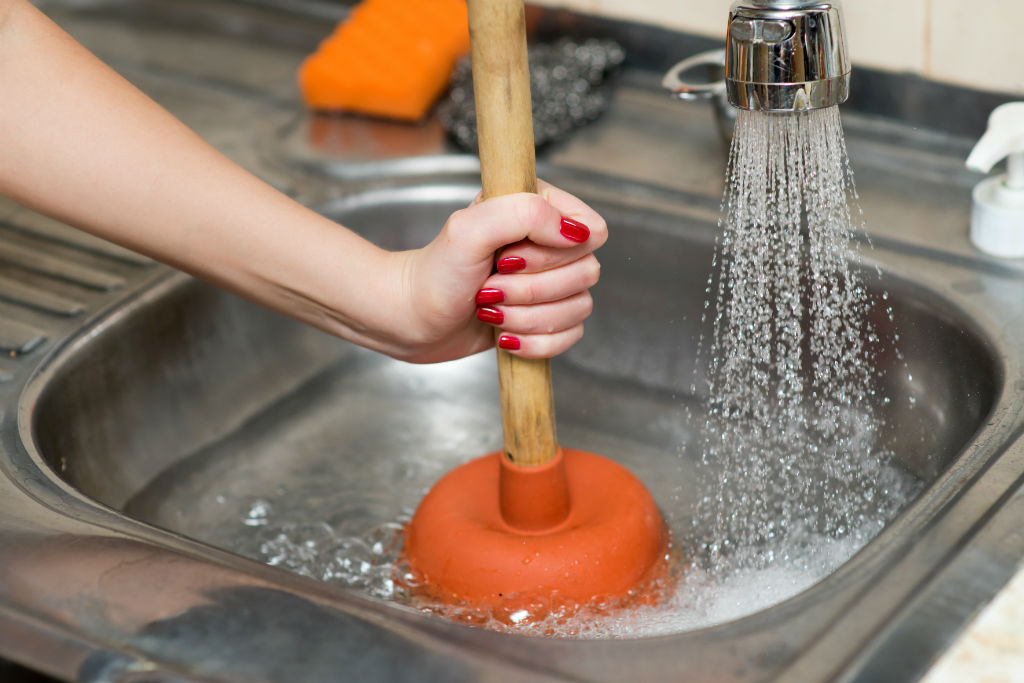Nearly everybody has his or her own piece of advice when it comes to Solved! How to Fix a Slow Sink Drain.

Introduction
We've all been there: You're cleaning your teeth or washing your hands, and you discover the water pooling in the sink. Instead of quickly swirling down the tubes, it remains, turning your once-refreshing early morning routine right into a small swamp scene. A slow-draining sink isn't just aggravating; it's commonly an indicator of bigger pipes concerns prowling underneath the surface area. The bright side is that many slow-draining sinks can be taken care of with a little know-how, a few standard devices, and some patience. Ready to tackle this project head-on? Allow's roll up our sleeves and dive right in.
Understanding the Reasons For a Slow-Draining Sink
Before you start poking around in your pipes, it assists to understand what might be causing the stagnation. Comprehending the root cause makes it less complicated to choose the best repair.
Devices and Materials You'll Require
The right devices make all the difference. Thankfully, you won't require a totally equipped plumbing technician's van to finish the job.
Step-by-Step Guide to Dealing With a Slow-Draining Sink
Now, allow's enter into the nitty-gritty. This detailed procedure will direct you via easy techniques to restore your sink's water drainage.
Step 1: Get Rid Of and Tidy the Stopper
Usually, the stopper (that tiny plug you push down to block water) is the initial offender. Remove it carefully and wipe any kind of hair or gunk caught around its base. Wash it extensively prior to putting it back in place.
Step 2: Use a Bettor to Dislodge Debris
Got that plunger all set? Position it over the drainpipe and give it a couple of firm pumps. The idea is to create suction that can loosen any kind of obstruction. If you see bits of particles floating up, you get on the ideal track.
Step 3: Try a Drain Snake or Cable Wall Mount
If the plunger doesn't suffice, it's time to draw out the drain serpent. Gently feed it into the drain and spin as you go. You might really feel some resistance-- that's likely the blockage. Keep twisting and drawing up until you remove the obstruction. If you do not have a drainpipe snake, an aligned wire hanger can work in a pinch.
Tip 4: Apply a Do It Yourself Drain Cleanser
An all-natural cleaner made from baking soft drink and vinegar can break down residual grime. Pour half a cup of baking soda into the drain, complied with by half a mug of vinegar. Allow it fizz for about 15 minutes, then flush with warm water. This chain reaction usually does marvels for small obstructions.
Tip 5: Reassemble and Test the Sink
Put everything back together and run the tap. Does the water now swirl down the tubes at a commendable rate? If yes, provide yourself a pat on the back. If not, do not despair-- there are still a couple of even more dress up your sleeve.
Important Devices for Do It Yourself Services
A bettor is your go-to beginning point. A tiny, sink-sized bettor creates suction that can remove minor clogs. For even more consistent clogs, a drain serpent (in some cases called a plumbing professional's auger) works wonders. A set of handwear covers, a flashlight, and maybe a pair of safety goggles are also helpful.
Advised Cleansing Solutions
Mild dish soap and hot water can assist break down oily build-up. A mixture of cooking soft drink and vinegar is a tried and true natural remedy, and enzymatic cleansers use a more environmentally friendly strategy. Keep chemical drainpipe cleaners as a last hope, as they can be rough on your pipes.
Typical Culprits Behind Slow Water Drainage
So, what's obstructing things up? Commonly, it's a mixture of day-to-day debris-- think hair, soap residue, toothpaste residue, and leftover food fragments. Gradually, these tiny bits build up and cling to the pipe walls, progressively narrowing the flow and making it harder for water to pass through. In some cases, mineral deposits from hard water can also contribute to the substance, developing the best storm for persistent obstructions.
When is it Time to Take Action?
If you discover the water draining slower than usual, it's a good idea to interfere earlier as opposed to later on. Waiting also long can cause finish clogs, unpleasant smells, or even pipeline damage. If the water takes more than a few seconds to clean out after turning off the faucet, consider it a warning and prepare to place on your DIY hat.
Safety And Security First: Safety Measures and Preparations
Before you launch into unclogging setting, think about safety. You're taking care of possibly filthy water and particles, so slip on a pair of handwear covers. If you're utilizing chemical cleansers, make certain the area is well-ventilated and comply with the directions on the tag.
Safety Equipment and Work Space Configuration
Put down some old towels or cloths around the sink area to catch splashes. Remove any kind of items that may get in your method, like soap dispensers or toothbrush holders. See to it you have excellent lighting-- grab a flashlight if required.
Different Approaches for Stubborn Clogs
Not all blockages are created equal. If your sink still declines to comply, take into consideration these alternate options.
Sodium Bicarbonate and Vinegar Approach
We currently discussed this, yet it deserves keeping in mind once again. This gentle, environmentally friendly approach is safer than chemical cleansers and frequently quite effective.
Enzymatic Drainpipe Cleansers
Enzyme-based cleaners utilize natural bacteria to digest organic matter. They're an exceptional choice if you're looking to avoid severe chemicals. Simply keep in mind, they might take a bit longer to work their magic.
Chemical Drainpipe Cleaners: Advantages And Disadvantages
Chemical cleansers can blast with hard obstructions quickly, however they're not without drawbacks. They can produce warm and fumes, damages pipelines if made use of excessively, and present environmental threats. Use them sparingly, and constantly adhere to the instructions very carefully.
Safety Nets to Keep Your Sink Flowing
Prevention is the very best treatment. By taking on a few straightforward routines, you can keep your sink from decreasing to begin with.
Routine Cleansing Practices
Clean down the sink container and fixture location frequently. Eliminate hair or food fragments before they have a possibility to wash down the drainpipe.
Staying Clear Of Hazardous Substances Down the Drain
Hesitate before disposing coffee grounds, grease, or fibrous veggie scraps down the sink. These offenders hold on to pipe walls, developing obstructions in time.
Routine Upkeep Checks
Arrange a fast regular monthly assessment. Run warm water via the sink for a few minutes, paying attention to the circulation. If it appears sluggish, act quickly prior to it becomes a full-on obstruction.
When to Call a Specialist Plumbing
Occasionally, no matter exactly how tough you try, that clog simply won't move. That's when it's time to bring in the pros.
Indicators That Indicate a Much More Major Problem
If your sink drains pipes slowly in spite of several attempts, or if you see water backing up in various other components (like your shower or toilet), you might have a much more significant pipes issue hiding much deeper in the system.
Stabilizing DIY Efforts with Expert Aid
While do it yourself can save you money and supply a sense of accomplishment, there's no embarassment in calling a professional. A professional plumbing professional can examine your entire pipes setup, guaranteeing there's no underlying damages or long-term issue that could cost you a lot more down the road.
Comparing Expenses and Long-Term Solutions
Prior to making a decision, take into consideration the big picture. An affordable, quick fix could solve the issue briefly, however buying a more irreversible service can conserve you cash and stress and anxiety over time.
Evaluating the Costs of DIY vs. Professional Repairs
DIY solutions frequently set you back little bit greater than the rate of a bettor or a container of baking soda. Specialist solutions, on the other hand, featured a cost yet might avoid repeated concerns and costly repair work later.
Investing in Quality Fixtures and Upgrades
If your sink's layout adds to regular clogs, it could be worth upgrading to higher-quality components or changing the plumbing design. Consider this a financial investment in your home's capability and convenience.
Final thought
A slow-draining sink can seem like a small inflammation, but it's commonly an indicator that your pipes requires a little TLC. By understanding the source, utilizing the right tools and techniques, and devoting to straightforward preventive measures, you can keep your sink streaming freely. And when all else stops working, never ever hesitate to call in a specialist-- your home's plumbing deserves the financial investment in care and maintenance.
Three Common Ways to Fix a Slow Drain
Baking Soda Method
Boil a full pot of water. Measure out cup of baking soda and pour it down the drain. Then take cup of the magical cleansing substance known as white vinegar and drop that down there too. Allow the mixture to fizz in the drain for five minutes as the vinegar and baking soda combine. Now dump in that whole pot of boiling water. This combination of cleaning substances should clear out anything that is causing your sink to drain slowly. If it doesn t...
Zip-It
If the baking soda method doesn t clear out your drain, it may be because a significant amount of hair and/or other debris has collected there and you need to remove it. Purchase a Zip-It tool at any home improvement or hardware store and insert it into your drain. It will catch any collected hair or debris that s blocking the flow of water. Pull it out. If it s got a big clump of hair, etc. on the end, you ve probably got your culprit.
Drain Cleaner
If these methods don t work, there is the standard drain cleaner that you can also buy in a hardware store or even your local grocery store. It s better if you can use a household solution, but these drain cleaners often work in a pinch. They re very simple to use. You generally just dump them in your drain and wait. If even this method is not effective, it may be time to call the plumber.
https://www.mrrooter.com/oneida/about-us/blog/2017/july/three-common-ways-to-fix-a-slow-drain/

As a serious reader on , I thought sharing that excerpt was appropriate. Those who liked our page if you please be sure to share it. Kudos for being here. Come back soon.
Call Today
 Jeremy Miller Then & Now!
Jeremy Miller Then & Now! Michael C. Maronna Then & Now!
Michael C. Maronna Then & Now! Bill Cosby Then & Now!
Bill Cosby Then & Now! Bernadette Peters Then & Now!
Bernadette Peters Then & Now! McKayla Maroney Then & Now!
McKayla Maroney Then & Now!